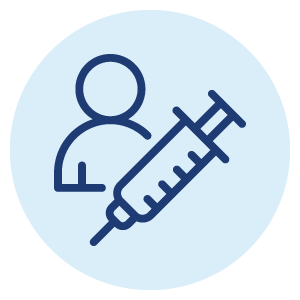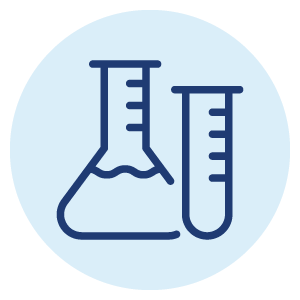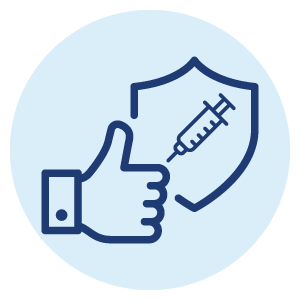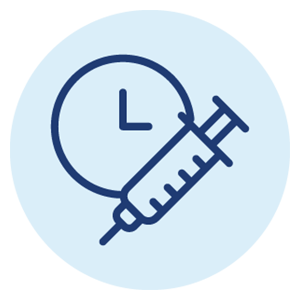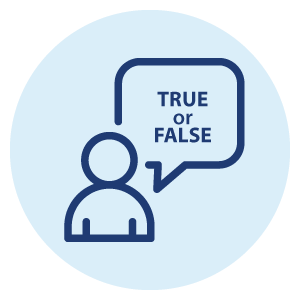
Getting to Know Vaccines
Understanding vaccines
Vaccines are one of the most important medical accomplishments in the last 50-plus years and save millions of lives annually. There is a lot of information out there about vaccines and sometimes it is hard to know where to look. Here are some tools and resources to help you make informed decisions.
What are vaccines?
Vaccines are medications that help your body learn how to fight germs like viruses and bacteria. Our immune system can then remember how to protect us in the future if we encounter the real germ. Vaccines help to prevent you from getting sick and help those around you by lowering the number of people who can get sick and spread vaccine preventable diseases.
What are vaccines made of?
The ingredients found in vaccines all have an important role to play and are found in small quantities.
Some of these ingredients include:
- Adjuvants - to help the body’s immune system respond better to vaccines.
- Preservatives - to prevent contamination by micro-organisms in multi-dose vaccine vials.
- Stabilizers - to keep vaccines from breaking down while they are in storage.
Side effects
Like any medication, vaccines can cause side effects and reactions. After being vaccinated, it's common to have temporary side effects lasting from a few hours to a few days. This is the body's natural response, as it's working hard to build immunity against the disease.
The most common side effects are injection site reactions (pain, redness, and/or swelling), muscle pain (myalgia), headache, and/or low-grade fever.
Individuals may react differently to vaccines. If you think you have a serious reaction to a vaccine, follow up with a health care provider and report it to Durham Health Connection Line by calling 905-666-6242.
Adverse events following immunizations (AEFIs) are unwanted or unexpected health effects that happen after someone receives a vaccine, which may or may not be caused by the vaccine. Durham Region Health Department routinely investigates reports of adverse events and provides the report to Public Health Ontario to ensure vaccine safety.
For more information about AEFI’s reported in Ontario, visit Public Health Ontario.
Vaccine approval
Health Canada takes vaccine safety seriously. Careful research and development take place before a vaccine is considered for approval. Following approval, the National Advisory Committee on Immunization recommends how the vaccine should be used.
Once vaccines are made available to the public, they are continually monitored for safety by:
- The Public Health Agency of Canada
- IMPACT (Immunization Monitoring Program ACTive)
- Public Health Units
Why can recommendations change over time?
Vaccine recommendations evolve over time as new evidence emerges and ongoing safety monitoring continues. This doesn’t mean earlier guidance was wrong, it reflects our growing understanding and commitment to improving health care recommendations.
Spot the truth online
Every day, we see messages online about health, science, government, and many other topics. Some of it is helpful, but a lot of it is wrong. If you learn to tell the difference, and know what to do about it, you can protect yourself and others.
There are two main types of false information you need to be aware of:
| Misinformation |
Misinformation – Inaccurate information that is not deliberately intended to deceive.
|
| Disinformation |
Disinformation – False information that is deliberately intended to mislead or manipulate public opinion.
|
When looking up information for yourself, consider using the SIFT method, a simple tool to help you identify accurate information.
Have questions?
Book a phone consultation appointment with a trusted health care professional to ask any questions you may have about vaccines.
Resources on vaccines
The following sources use transparent, evidence-based methods to develop their vaccine guidance. Their recommendations are updated regularly to reflect the latest data, and their decision-making processes are publicly available. This openness allows anyone to understand how the conclusions were reached, not just what the conclusions are.
Contact Us





